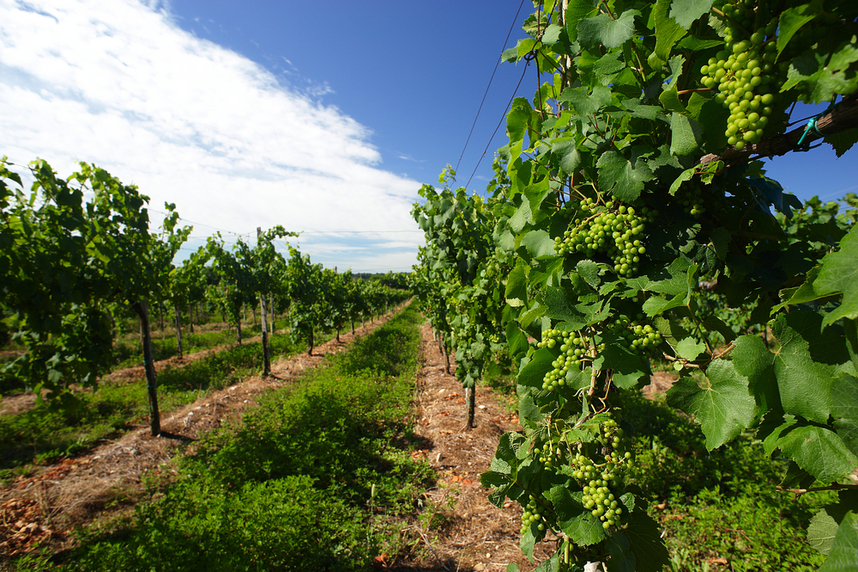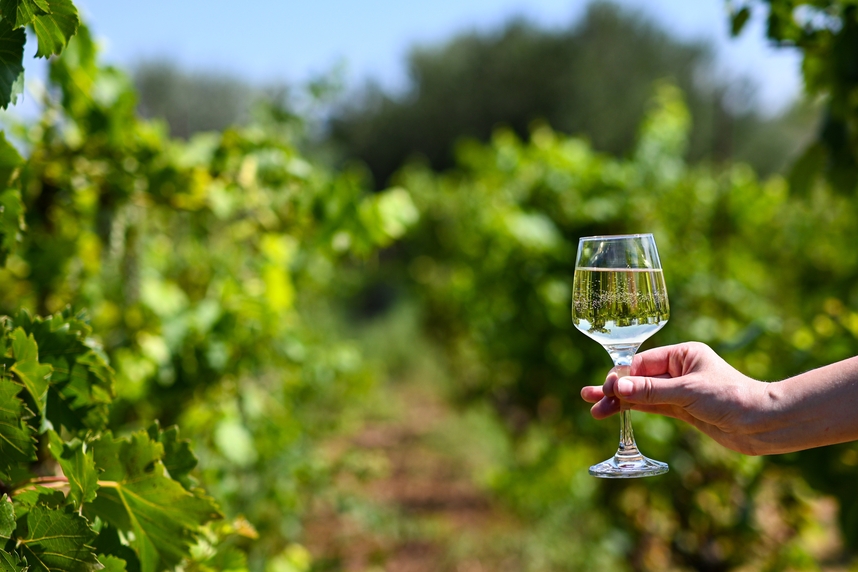Although at the top of the rankings of the most elegant and renowned bubbles of all time sits his majesty Champagne, Italy has little to envy our cousins across the Alps when it comes to sparkling wine production. Cellars and shops are indeed full of noteworthy Traditional Method labels, including the refined Franciacorta, a DOCG that wine lovers should taste at least once in their lifetime.
Here's everything you need to know about Franciacorta, including types, organoleptic notes and gastronomic pairings!
What is Franciacorta and how is it produced?
Franciacorta is a sparkling wine produced in the eponymous wine region of Lombardy according to the Traditional Method, which is the term used in Italy for the méthode champenoise, typically used for Champagne. This involves secondary fermentation in bottle in contact with the yeasts, as well as a rather long ageing period, which makes it more precious and refined compared to sparkling wines made using the Charmat method.
Furthermore, the fame of this process lies in the fact that no detail is overlooked and every phase is monitored with meticulous attention.
Specifically, the steps to follow in the cellar are:
- Primary fermentation: the grapes are harvested manually between August and September (permitted varieties are Chardonnay, Pinot Noir and Pinot Blanc, with a small percentage of Erbamat) and then pressed gently. The must is fermented inside vats together with selected yeasts. It is in this phase that sugars are transformed into alcohol.
- Assembly: if planned, this phase involves a blending of wines from different vintages, in order to obtain a balanced style, according to the taste of each individual winery.
- Secondary fermentation: the wine is bottled together with a substance called liqueur de tirage, composed of wine, sugars and other yeasts, to encourage secondary fermentation. In this phase the typical effervescence of sparkling wines is formed, according to a process defined as prise de mousse.
- Ageing: the bottles are left to rest in the cellar for a minimum of 12 months, in order to develop their organoleptic bouquet.
- Disgorgement: after ageing, the bottles are stored in an inclined position and rotated daily in order to encourage the yeasts to rise towards the cork. Subsequently, the neck is frozen and the yeast residues are removed.
- Dosage: since disgorgement causes the loss of some product, the bottles are topped up with the liqueur d'expédition, a substance based on wine and sugar, in variable concentrations.
Bubbles compared: the types of Franciacorta
In Franciacorta production, the final phase plays a central role in defining the organoleptic identity and the sugar component, which is indeed called dosage. Based on the quantity of sugars contained in the liqueur d'expédition, it is possible to obtain different types of Franciacorta, divided as follows:
- Dosaggio Zero: up to 3g of sugar per litre.
- Extra Brut: sugar quantity less than 6g/l.
- Brut: sugar quantity less than 12g/l.
- Extra Dry: sugar level between 12 and 17g/l.
- Dry (or Sec): sugar between 17-32g/l.
- Demi Sec: sugar quantity between 22 and 50g/l.
Among the types of Franciacorta, moreover, one must not forget the rosé and Satèn versions.
The elegant pink hue of the former is obtained by leaving the must to macerate in contact with Pinot Noir skins, so that the anthocyanins present in them give the rosé colour.
Franciacorta Satèn, instead, is produced maintaining limited pressure inside the bottles, that is a maximum of 5 atmospheres instead of the 6 that characterise classic Franciacorta.
Characteristics and pairings with Franciacorta: the best labels to try!
The different characteristics of Franciacorta and its various types make it difficult to choose the perfect bottle. Here then are some labels proposed by Svinando to have as complete an overview as possible of this excellent Traditional Method sparkling wine.
"Millè" Franciacorta Brut DOCG Millesimato
For those looking for the best Franciacorta online, the secret is to start from the basics, beginning the tasting with its Brut version, a style that could be defined as "standard", as it seeks a delicate balance between sweetness and acidity, highlighting the natural characteristics of the grape varieties.
Well suited to this first tasting is the "Millè" Franciacorta Brut DOCG Millesimato, a sparkling wine vinified exclusively with Chardonnay grapes harvested in the same year, according to the production method of vintage wines.
The ageing in steel for 30 long months and the subsequent 30 months of rest in bottle give yeast aromas, enriched by a lively mineral texture and a balanced taste that adapts to numerous pairings.
At table it makes an excellent showing alongside baked salmon steaks, cod fillets in sauce and soft fish soufflés, but it also proves an excellent choice with aperitifs based on cured meats and medium-aged cheeses. A real treat? Pairing it with a sushi evening!
"Club Cuvée" Franciacorta DOCG Brut Satèn 2018
Franciacorta Satèn gives the palate a softer and more delicate experience, and a subtle and elegant perlage obtained from fermentation in bottle at controlled pressure.
Witness to these fascinating traits is this "Club Cuvée" Franciacorta DOCG Brut Satèn 2018, characterised by a magnetic straw yellow colour streaked with green and an elegant, fresh and soft bouquet. The scrupulous attention paid to every phase of Chardonnay grape vinification is also due to the choice to adhere to the principles of organic viticulture, an effort that rewards undeniably in qualitative terms.
The aromas of flowers and white-fleshed fruit give softness to the tasting, whilst on the palate the persuasive identity of this wine is balanced by the refreshing and savoury note that lingers long in the mouth, sip after sip.
At table it is an excellent companion to vegetarian dishes and fish menus, accompanying with its refined nuances swordfish carpaccio, tartare, prawn salads, tuna skewers, vegetable quiches or a tray of vegetables gratinéed in the oven. Not bad either with poultry and fresh cheeses.
Franciacorta DOCG "Flamingo" Rosé Brut
If Franciacorta vinified in white showcases aromas of flowers and white fruits, the rosé owes its organoleptic identity to notes of red fruits, like those perceived in the tasting of this Franciacorta DOCG "Flamingo" Rosé Brut.
In the vinification of this wine, the presence of 40% Pinot Noir is crucial not only for its copper nuances, but also for the organoleptic yield, centred on notes of berries and violet. The sip is savoury and fresh, satisfying and persistent, ideal not only with classic fish and shellfish menus, but also with a tasty dish that always brings everyone together: pizza!
Bellavista Franciacorta Demi-Sec DOCG "Nectar"
Excellent with white meats, seafood dishes and cheeses, Franciacorta shows a completely different identity in the Demi-Sec version. Thanks to its good sugar content, this Bellavista Franciacorta Demi-Sec DOCG "Nectar" - obtained with Chardonnay and Pinot Noir - goes perfectly with fruit desserts, from cakes to tarts, from small pastries to fruit salad, thanks to a magical sensory harmony.
Its strong point is precisely the particular dosage, carried out with a must from dried grapes, which gives the product a persuasive aromatic charge, between notes of honey, vanilla, citrus, flowers and pastries. On the palate it responds with the same softness and with an enveloping taste that immediately makes you want to take another sip.
History and main production areas

Suited to viticulture since ancient times, Franciacorta is a wine region situated below Lake Iseo and near the Pre-Alps, predominantly of glacial origin. The proximity of the lake is a crucial element in defining the climatic conditions, as it mitigates continental temperatures, both in summer months and during winter ones, bringing a good level of humidity and creating areas similar to the Mediterranean belt. The morainic soils are composed predominantly of sand, silt and sometimes stone, with a low percentage of clay.
Brief history of viticulture in Franciacorta
Franciacorta experienced a period of oenological development especially thanks to the production techniques developed by the Romans, whilst wine production by Benedictine monks in the medieval period contributed to the fame of local wine, used for religious celebrations. During the Renaissance, numerous noble families decided to strengthen wine activity, investing in quality vines and favouring Franciacorta wines at their courts.
The modern age was equally important, because the advancement of production techniques favoured local oenology. In the 1960s came the turning point, when the oenologist Franco Ziliani decided to use the méthode champenoise for the production of a Lombard sparkling wine - increasingly similar to the Franciacorta known today - awarded DOC denomination in 1967 and DOCG in 1995. In fact, Franciacorta was the first Italian sparkling wine to obtain this second recognition.
Now that you know everything about prestigious Franciacorta sparkling wines, explore the Svinando catalogue and choose the ideal bubble for you!

